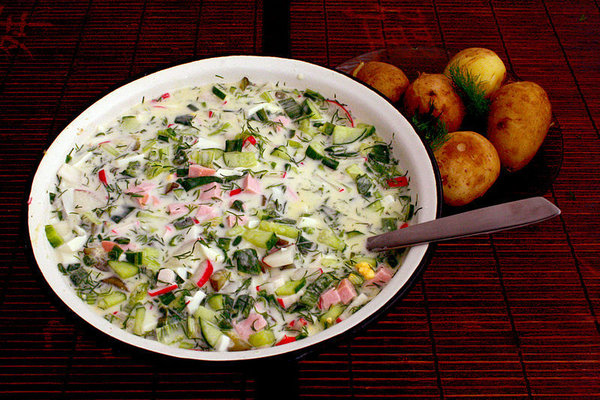New East food trending worldwide
The gastronomy of a nation is not only a touristic attraction, but also a storyteller. It is a language used to explain a land, culture, memory, experiences, travel. The gastronomy constitutes an important identity of the city, permeating the imaginary by the senses of smell, touch, taste and vision. Some traditions from the New Easter's culinary made their way outside of the region and are now trends in menus all over the world.

Who never heard of the famous dish that combines beef, sour cream and flour altogether in a delicious meal? Originally named Strogonoff (строганов), the traditional Russian recipe dates all the way back to the beginning of the 1900s, and began to have its foreign admirers after the fall of the Russian Empire in the 1920s. It is now consumed worldwide on the most different occasions and with varied seasonings characteristic of each culture that adopted it.
Food highlights differences
Food highlights the differences, similarities, beliefs and the social class to which one belongs, for carrying marks of a culture. In countries such as the United States and Australia, the stroganoff is often cooked with bacon, while in Sweden, beef can be replaced with sausages, and in Brazil with chicken or shrimp. With its popularization, in some countries it is possible to observe the preparation of pancakes or roasted potatoes (English type) with Strognoff. In Brazil, for example, it even became a pizza topping in some audacious restaurants.
In the gastronomic culture, food is not only food; and the way of eating defines not only what one eats, but also the person who ingests it, that is, reveals its origin, habits and customs. Thus, "disputes" on whether the dish was created in a country or in another are not rare. One of the most consumed alcoholic drinks in the world, for example, has its origins still unclear. When it comes to Vodka, Polish and Russians fight for the title of inventors.
One of the purest distilled beverages, Vodka's production dates from the 14th century. Currently, it is produced in several countries around the world such as Russia, Poland, France, the United States and Brazil. The drink can be either grain or potato based and is frequently flavored with a great variety of ingredients ranging from hot pepper and horseradish to fruits and berries. While in most of the world, the drink is usually mixed with fruits, sugar or sparkling water, in Russia it is common to find people drinking pure vodka without any mix in it.
There are those who say the renowned potato salad, so used as a side dish in most of the world, has its origins from the Russian Salad, also known as Olivier Salad. A mayonnaise-based potato salad distinguished by its diced texture and the contrasting flavors of pickles, hard-boiled eggs, boiled carrots, boiled potatoes, meat, and peas. In Russia, this dish is one of the main in the New Year buffet. Variations of Olivier salad are also popular in the Balkans, Iberian Peninsula, as well as in some Asian countries and throughout Latin America.
Borshch is more than an ordinary dish
For many, Borsch (In Russian, Борщ) is a more than ordinary dish; the so-known Russian soup is actually a predominant dish in Eastern Europe and in particular a merit of Ukraine. The dish consists mainly of beets, which is what gives it life. In addition, the soup is also composed of carrots, potatoes, cabbage, and meat broth. It can be consumed hot or cold, depending mostly on the weather and behaviors of the region, and it is traditionally served with sour cream or buckwheat sauce.
Over the course of the 19th and 20th centuries, borsch's popularity spread beyond its Slavic homeland, largely due to such factors as territorial expansion of the Russian Empire, Russia's growing political clout and cultural stature, and waves of emigration out of the country. Later on, it was taken to Western Europe and America mainly by Jewish immigrants fled from the persecution in these regions.
Last, but not least, there are the famous thin pancakes, known as Blini (блин). This typical Russian dish is prepared from batter - made from wheat, buckwheat, or other grains, - and fried in a hot frying pan. In Russia, they are part of a late winter celebration, the "Maslenitsa", in the last week of February, but blini are also popular in other countries in the region. This tradition was adopted by the Orthodox Church and is carried on to the present day, as the last week of dairy and egg products before Lent.
They are usually served with a variety of side dishes, including caviar and salmon, but can also be served with whipped cream, jams or other sweets, mushrooms or berries. So famous that, recently, the Russian food chain Teremok - specialist in all kinds of Blini - opened a new branch in New York City, United States.
The act of eating crystallizes cultural identities and provides information about the organization and structure of society. The study of the ingredients employed refers to history, to the invasions suffered, colonization, the culture practiced, the climate, the soil, among others.
Priscilla Castro
Subscribe to Pravda.Ru Telegram channel, Facebook, RSS!


